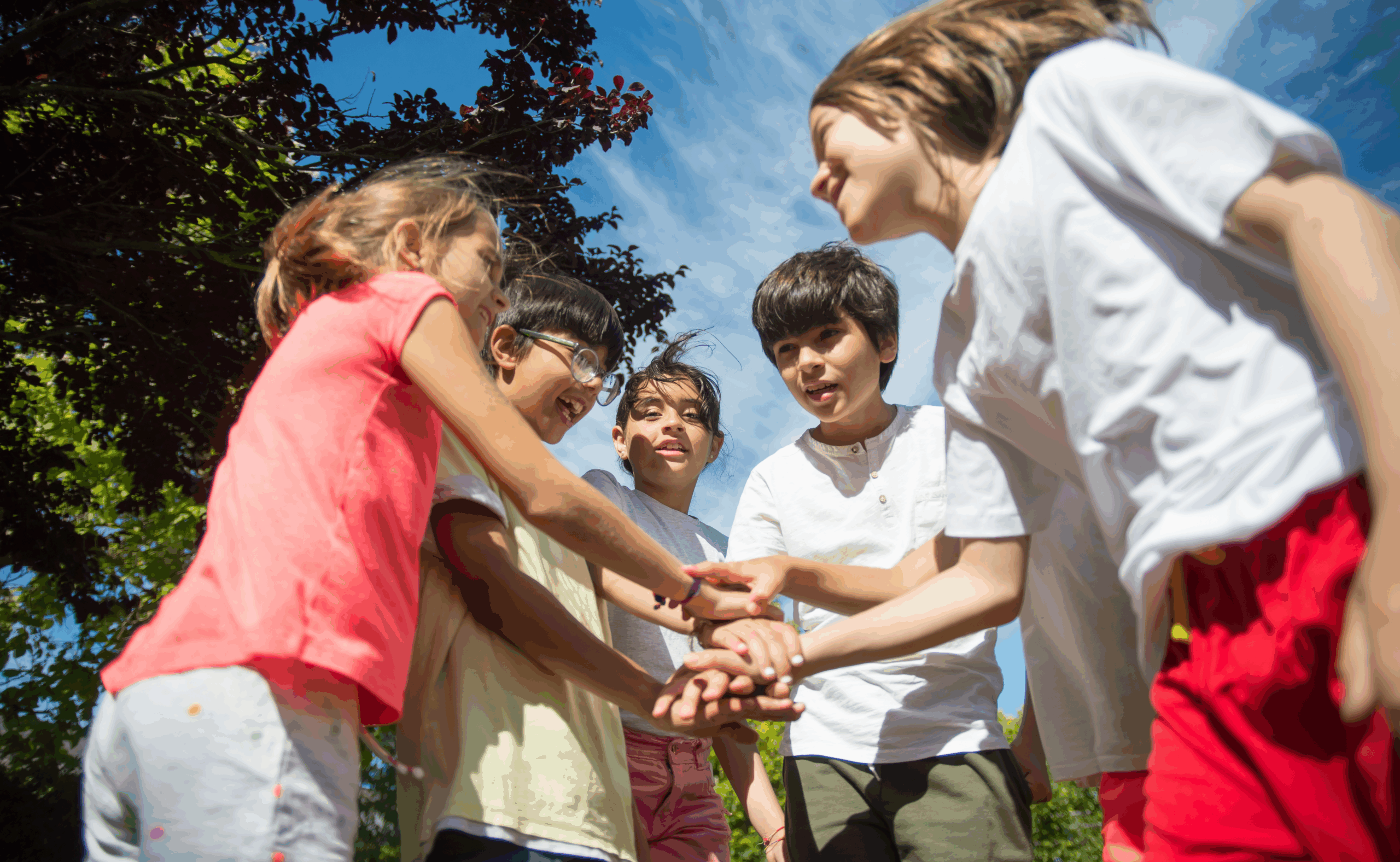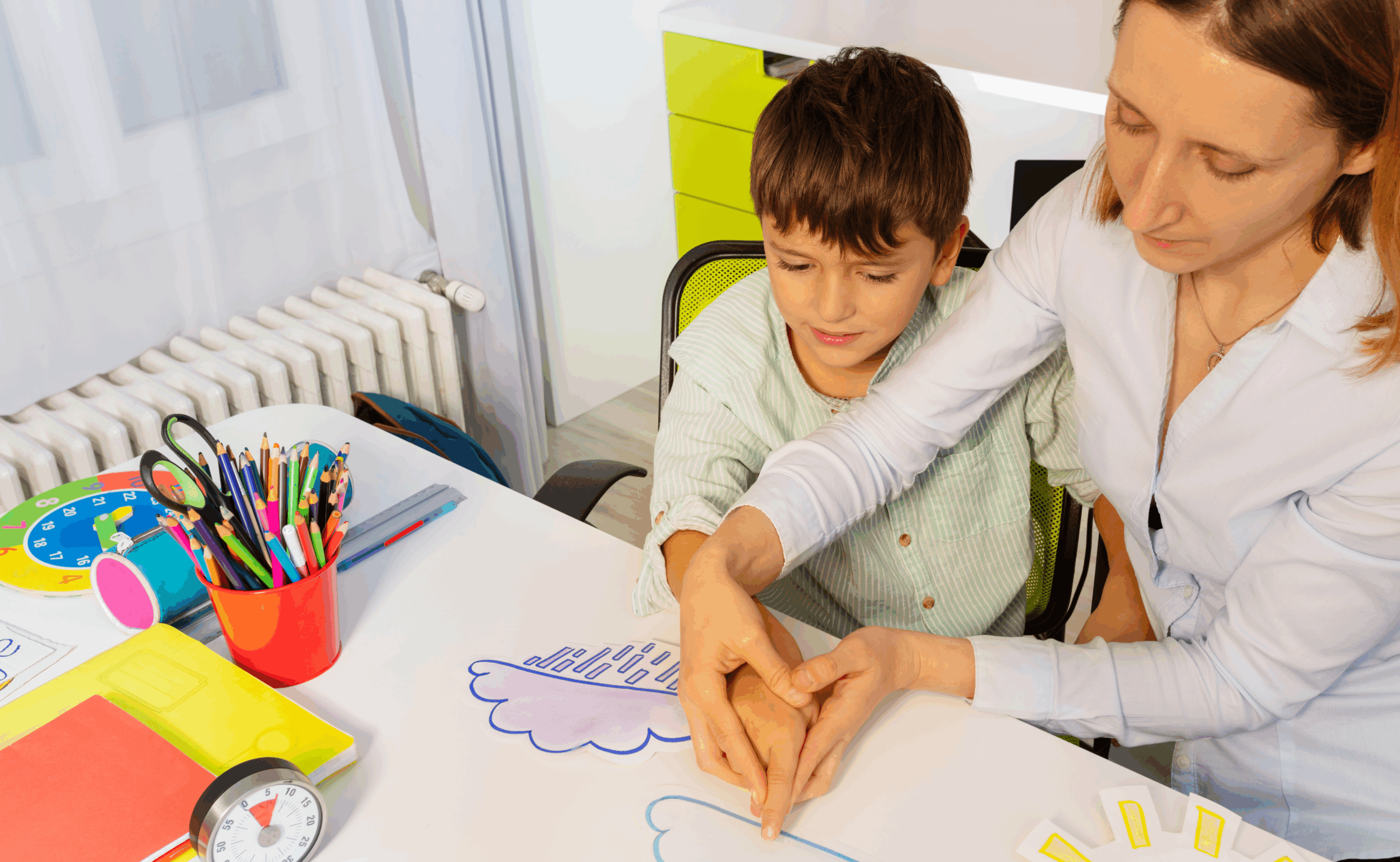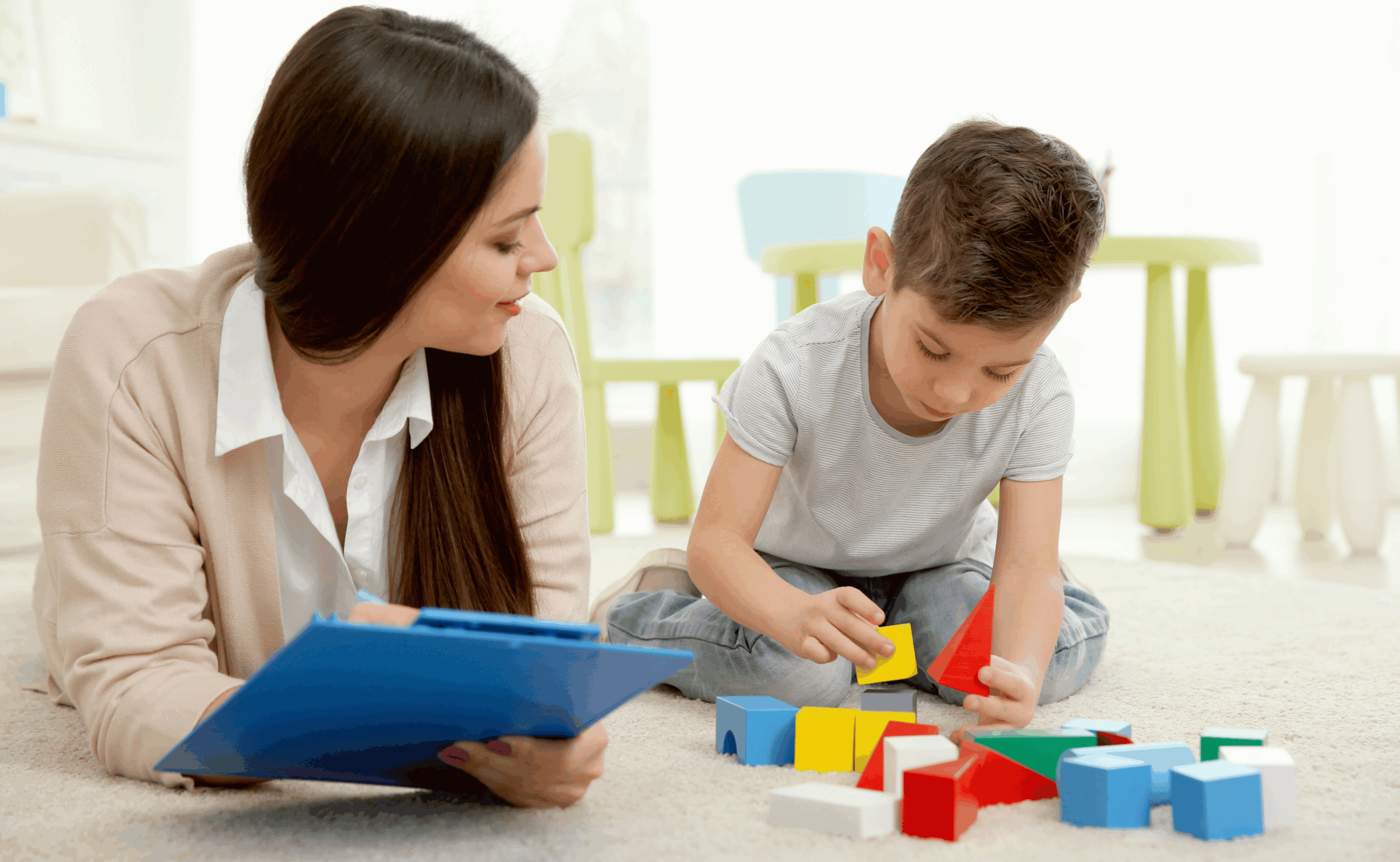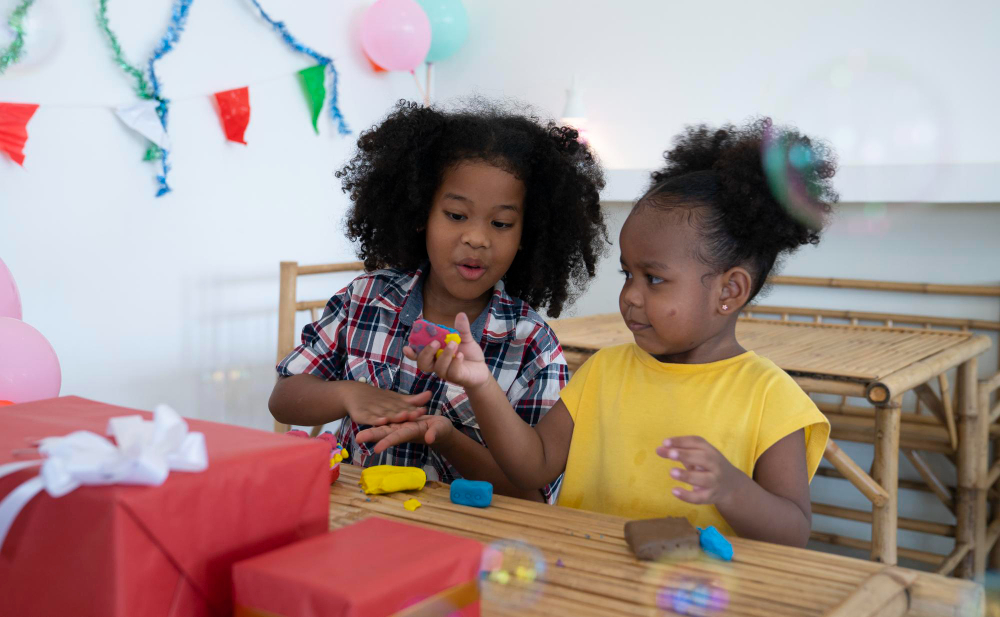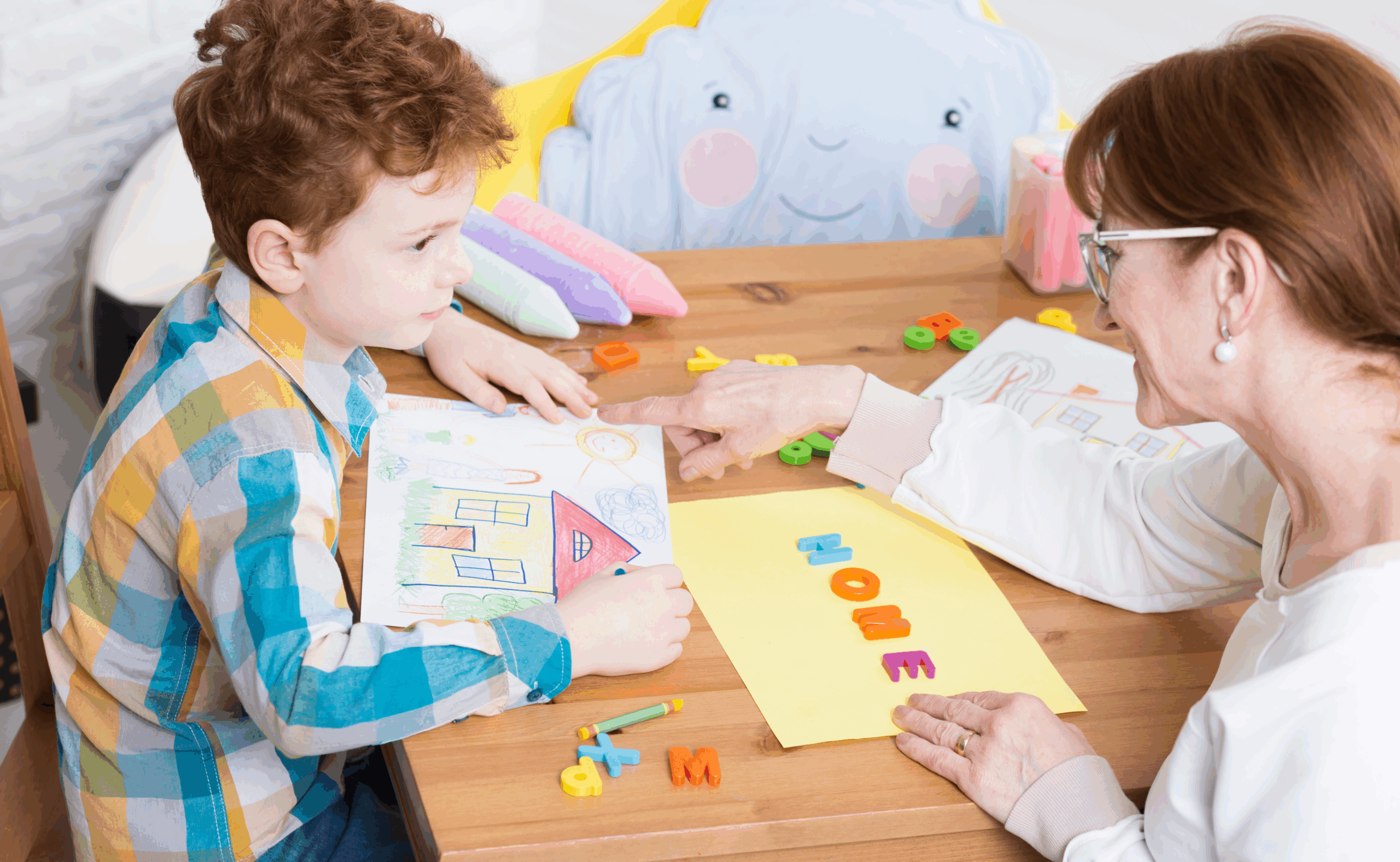Picture this: Sarah watches her 4-year-old daughter Emma hesitate at the playground, wanting to try the monkey bars but holding back because she’s afraid of failing. Meanwhile, across town, 8-year-old Marcus sits quietly in class, knowing the answer but too scared to raise his hand. These scenarios play out daily in homes and schools across Ohio, highlighting a crucial aspect of child development that often gets overlooked in our achievement-focused world.
Children’s self-esteem forms the foundation for everything they’ll accomplish in life. When kids believe in themselves, they take healthy risks, bounce back from setbacks, and approach challenges with curiosity rather than fear. The good news? Building confidence doesn’t require expensive programs or complicated strategies. The most effective self esteem activities for kids often happen through simple, everyday interactions that make children feel valued, capable, and proud of their unique qualities.
At Clever Bee Academy, educators have spent over two decades observing what truly works in building children’s confidence. Through their Play & Learn curriculum, they’ve discovered that the most impactful confidence-building happens when children don’t even realize they’re working on their self-esteem. Instead, they’re just having fun, exploring, and discovering what they can accomplish when given the right support and encouragement.
This comprehensive guide explores research-backed strategies, age-appropriate activities, and practical approaches that parents and educators can implement immediately. Whether dealing with a shy toddler or a perfectionist preteen, these insights will help nurture the kind of deep, lasting confidence that serves children throughout their lives.
Understanding Self-Esteem in Children
Self-esteem in early childhood differs significantly from adult confidence. For young children, self-worth develops through concrete experiences rather than abstract concepts. When a 3-year-old successfully pours water into a cup without spilling, that moment of competence builds genuine confidence. When a 7-year-old helps a classmate solve a problem, the experience of being helpful and capable strengthens their sense of self-worth.
This differs from self-confidence, which tends to be situation-specific. A child might feel confident about riding a bike but lack confidence in reading aloud. Self-esteem, however, represents a deeper sense of personal worth that transcends specific skills or abilities. It’s the internal voice that says “I am worthy of love and respect” regardless of performance in any particular area.
The early years prove especially critical for self-esteem development because young brains are incredibly plastic and responsive to environmental influences. Between ages two and six, children’s neural pathways are forming at an unprecedented rate. Positive experiences during this window create robust neural networks associated with confidence and resilience. Conversely, repeated experiences of criticism, comparison, or dismissal can establish patterns of self-doubt that become increasingly difficult to overcome.
Research consistently shows that children with healthy self-esteem perform better academically, form stronger friendships, and demonstrate greater resilience when facing challenges. They’re more likely to try new activities, express their opinions respectfully, and recover quickly from disappointments. Perhaps most importantly, they develop the internal resources needed to navigate adolescence and adulthood with greater stability and success.
However, many children today struggle with self-esteem challenges that previous generations didn’t face. Social comparison starts earlier than ever, sometimes beginning in preschool when children notice differences in clothing, toys, or abilities. Academic pressures have intensified, with some parents inadvertently sending messages that love and approval depend on performance. Even well-meaning adults sometimes undermine confidence by rushing to help rather than allowing children to struggle productively through challenges.
Age-Appropriate Self Esteem Activities for Kids by Development Stage
Toddlers and Preschoolers: Building the Foundation
The toddler and preschool years represent the golden opportunity for establishing confidence through mastery of basic skills. At this stage, self-esteem grows through what psychologists call “efficacy experiences” – moments when children discover they can affect their environment and accomplish meaningful tasks.
Independence activities prove particularly powerful during these years. When 2-year-old Joshua learns to put on his own shoes, he’s not just developing fine motor skills. He’s learning that he’s capable of taking care of himself, that persistence pays off, and that he can contribute to family routines. Parents and caregivers can maximize these moments by providing appropriate challenges that stretch children’s abilities without overwhelming them. This might involve offering two shirt choices instead of dressing the child completely, or providing a small pitcher so toddlers can pour their own milk.
Creative expression projects offer another powerful avenue for building confidence in young children. Unlike academic tasks with clear right and wrong answers, art, music, and dramatic play allow children to succeed simply by participating. When 4-year-old Maria creates a finger painting that adults celebrate enthusiastically, she learns that her ideas and creations have value. The key lies in focusing on the process rather than the product, commenting on the effort and creativity rather than whether the artwork looks “realistic” or “pretty.”
Physical achievement games designed for this age group help children discover their growing capabilities while having fun. Simple obstacle courses using pillows, tape lines, and cardboard boxes allow toddlers to experience the satisfaction of physical challenges without the pressure of competition. Balance beam walking, dancing to music, and playground exploration all contribute to a growing sense of physical competence that translates into general confidence.
Early Elementary: Expanding Horizons
As children enter elementary school, their world expands dramatically, bringing new opportunities for confidence building alongside new potential challenges. Academic success celebrations become increasingly important, but the approach requires careful consideration. Rather than only celebrating A grades or perfect scores, effective confidence building recognizes effort, improvement, and individual progress.
Reading provides exceptional opportunities for building self-esteem when approached thoughtfully. Children who struggle with reading often develop negative associations with books and learning in general. However, when adults celebrate small victories – sounding out a difficult word, understanding a story’s main idea, or choosing to read independently for five minutes – children begin to see themselves as capable learners. Creating cozy reading nooks, allowing children to read to pets or younger siblings, and finding books that match their interests can transform reading from a source of stress into a confidence builder.
Social skills development becomes crucial during the early elementary years as peer relationships take on greater importance. Children need explicit instruction and practice in skills like sharing, taking turns, resolving conflicts, and showing empathy. Role-playing different social scenarios, discussing feelings and reactions, and providing opportunities for cooperative activities help children develop the social competence that supports healthy self-esteem.
Leadership opportunities appropriate for this age group might include being the line leader, feeding classroom pets, or helping younger children with simple tasks. These experiences teach children that they have valuable contributions to make and that others can depend on them. The key lies in rotating opportunities so all children experience the confidence boost that comes from being helpful and responsible.
Late Elementary: Advanced Challenges
Older elementary children can handle more complex confidence-building experiences that prepare them for the increased independence and responsibility they’ll face in middle school. Goal-setting and achievement activities become particularly powerful during this stage as children develop the cognitive ability to plan for the future and track their progress over time.
Personal milestone tracking might involve learning a new skill like playing a musical instrument, training for a fun run, or completing a challenging book series. The process of setting a goal, breaking it down into manageable steps, and celebrating progress along the way teaches children that they can accomplish significant things through sustained effort. This experience proves invaluable when they later face academic or social challenges that require persistence.
Public speaking and presentation opportunities help children develop confidence in expressing their ideas and opinions. This doesn’t necessarily mean formal speeches; it might involve sharing a book report with the class, teaching other children a skill they’ve learned, or presenting a science project. The key lies in creating supportive environments where children feel safe to take the risk of speaking up.
Problem-solving challenges appropriate for this age group might include puzzles, brain teasers, or real-world scenarios like planning a family outing or organizing a classroom celebration. When children successfully navigate complex problems, they develop confidence in their thinking abilities and learn to approach challenges with curiosity rather than anxiety.
Daily Self Esteem Activities for Kids: Building Routines
Confidence building proves most effective when integrated into daily routines rather than treated as separate, special activities. Morning routines offer exceptional opportunities for starting each day with positive experiences and expectations. Simple practices like having children choose their clothes, pack their backpacks, or select their breakfast options provide early wins that set a positive tone for the day.
Positive affirmation practices work best when they’re specific and genuine rather than generic. Instead of simply saying “You’re great,” effective affirmations might focus on specific qualities like “You showed real kindness when you helped your sister with her puzzle” or “I noticed how you kept trying even when the math problem was difficult.” These specific observations help children internalize positive beliefs about their character and capabilities.
Learning time presents countless opportunities for building confidence when adults focus on progress rather than perfection. Celebrating mistakes as learning opportunities, acknowledging effort and strategy use, and helping children recognize their own improvement creates a growth mindset that supports long-term confidence. Simple practices like having children explain their thinking process or teaching others what they’ve learned reinforce their sense of competence.
Evening routines provide natural opportunities for reflection and gratitude practices that reinforce positive experiences from the day. Family sharing time where each person mentions something they’re proud of, something they learned, or something they’re looking forward to helps children end their days with positive thoughts and expectations. These practices prove particularly valuable for children who tend toward perfectionism or self-criticism.
The Science Behind Effective Self Esteem Activities for Kids
Understanding the research behind confidence building helps parents and educators make informed decisions about which approaches to prioritize. Growth mindset research, popularized by psychologist Carol Dweck, demonstrates that children who believe abilities can be developed through effort and learning show greater resilience and achievement than those who believe abilities are fixed traits.
This research has profound implications for how adults praise and encourage children. Praise focused on effort, strategy, and improvement (“You worked really hard on that math problem and tried three different approaches”) proves more effective than praise focused on ability or intelligence (“You’re so smart at math”). When children believe their efforts matter, they’re more likely to persist through challenges and view setbacks as temporary rather than permanent.
Neuroscience research reveals that positive experiences literally change brain structure, strengthening neural pathways associated with confidence and resilience. However, this same plasticity means that negative experiences can also create lasting impacts. The good news is that brains remain changeable throughout childhood, meaning it’s never too late to help children develop more positive neural patterns through consistently supportive experiences.
The concept of intrinsic versus extrinsic motivation also plays a crucial role in sustainable confidence building. Children who develop internal motivation – doing things because they’re interesting, meaningful, or satisfying – show greater persistence and satisfaction than those motivated primarily by external rewards like stickers, prizes, or praise. This doesn’t mean external recognition isn’t valuable, but rather that the ultimate goal should be helping children develop their own internal sense of satisfaction and accomplishment.
Social learning theory emphasizes that children learn not just from their direct experiences but also from observing others. When children see peers, siblings, or adults handling challenges with persistence and optimism, they’re more likely to develop similar approaches. This highlights the importance of adults modeling resilience, curiosity, and positive self-talk rather than perfectionism or harsh self-criticism.
Creating a Supportive Environment for Self-Esteem Growth
The physical environment plays a more significant role in confidence building than many people realize. Classrooms and homes that display children’s work, provide comfortable spaces for quiet activities, and offer materials that invite exploration send clear messages about what’s valued and expected. Child-sized furniture, accessible art supplies, and organizational systems that children can manage independently all contribute to feelings of competence and belonging.
Emotional environment proves even more crucial than physical space. Children develop confidence in environments characterized by unconditional positive regard – the sense that they’re valued as people regardless of their performance or behavior. This doesn’t mean accepting all behavior without boundaries, but rather maintaining respect and care for the child even while addressing problematic actions.
Effective feedback focuses on specific behaviors and choices rather than global character judgments. Instead of “You’re such a good helper,” more effective feedback might be “When you cleaned up the blocks without being asked, it really helped our classroom run smoothly.” This approach helps children understand exactly what they did well and why it mattered, making them more likely to repeat positive behaviors.
The social environment within classrooms and families significantly impacts individual children’s confidence levels. When adults actively work to create inclusive communities where differences are celebrated rather than merely tolerated, all children benefit. This might involve reading books featuring diverse characters, discussing different family structures, or explicitly teaching children to appreciate various learning styles and abilities.
Common Mistakes Parents Make and How to Avoid Them
Well-meaning parents sometimes inadvertently undermine their children’s confidence through approaches that seem supportive but actually create dependency or anxiety. Over-praising represents one common pitfall. When children receive enthusiastic praise for routine accomplishments, they may begin to question the sincerity of feedback or become dependent on external validation for self-worth.
More effective approaches involve offering genuine, specific recognition when children demonstrate effort, kindness, or growth. The goal should be helping children develop their own internal sense of satisfaction rather than creating praise junkies who can’t function without constant external validation.
Comparing children, even positively, often backfires by creating anxiety about maintaining superior status or resentment about being seen as less capable. Comments like “Why can’t you be more like your sister?” obviously damage confidence, but even positive comparisons like “You’re the best artist in your class” can create pressure and anxiety. More effective approaches focus on individual growth and effort, celebrating each child’s unique strengths and interests.
The rescue instinct represents another common confidence-undermining pattern. When parents rush to solve problems, complete tasks, or prevent all disappointments, they inadvertently send the message that children aren’t capable of handling challenges independently. While protection from genuine danger is essential, allowing children to struggle productively through age-appropriate challenges builds resilience and self-efficacy.
Implementing Self Esteem Activities for Kids at Home and School
Successful confidence building requires coordination between home and school environments. When parents and teachers communicate regularly about children’s needs, challenges, and successes, they can provide consistent support that reinforces positive messages across settings. This might involve sharing strategies that work well at home, discussing concerns about self-esteem issues, or coordinating approaches to specific challenges.
Home implementation benefits from focusing on family activities that naturally build confidence without feeling forced or artificial. Cooking together, working in gardens, completing household projects, and playing cooperative games all provide opportunities for children to contribute meaningfully to family life while developing various skills and competencies.
School partnerships work best when teachers and parents view each other as allies rather than adversaries. Regular communication about what’s working well, concerns about confidence or motivation, and strategies for supporting specific children helps ensure consistency across environments. This might involve email updates, brief phone calls, or informal conversations during pickup times.
Community extension opportunities help children see themselves as valuable contributors to their broader world. Age-appropriate service projects, participation in community events, or involvement in local organizations can provide powerful confidence-building experiences while teaching children about civic responsibility and community connection.
Measuring Progress and Success
Recognizing progress in self-esteem development requires looking beyond obvious indicators like test scores or social popularity. More meaningful measures might include increased willingness to try new activities, improved recovery from disappointments, or greater independence in problem-solving situations.
Behavioral observations provide valuable insights into confidence levels. Children with healthy self-esteem typically show age-appropriate independence, express their needs and preferences clearly, interact positively with peers, and approach new situations with curiosity rather than fear. They also demonstrate resilience when facing setbacks, viewing challenges as opportunities to learn rather than threats to their self-worth.
Parent and teacher observation tools can help track subtle changes in confidence levels over time. Simple checklists focusing on specific behaviors like “tries new activities willingly,” “recovers quickly from disappointments,” or “expresses opinions respectfully” can help adults recognize progress that might otherwise go unnoticed.
Long-term development monitoring involves looking at patterns over months and years rather than day-to-day fluctuations. Children’s confidence naturally varies based on developmental stages, life circumstances, and individual temperament. However, overall trajectories should show increasing independence, resilience, and positive self-regard as children mature.
Expert Tips from Clever Bee Academy Educators
Educators at Clever Bee Academy have observed thousands of children over more than two decades, providing unique insights into what truly supports long-term confidence development. Their experience reveals that the most confident children aren’t necessarily the most outgoing or academically advanced. Instead, they’re children who have learned to trust their own capabilities, value their unique qualities, and approach challenges with optimism and persistence.
One key insight involves the importance of allowing children to experience productive struggle. While it’s natural to want to prevent children from feeling frustrated or disappointed, these experiences actually build resilience when handled supportively. Children who learn to persist through challenges, ask for help when needed, and celebrate small steps forward develop much stronger confidence than those who only experience easy successes.
Another crucial observation relates to the power of genuine relationships in building confidence. Children flourish when they feel truly seen and appreciated by important adults in their lives. This doesn’t require grand gestures or expensive gifts; it happens through daily interactions characterized by respect, interest, and authentic care for each child’s wellbeing and growth.
The academy’s educators also emphasize the importance of celebrating diverse types of intelligence and capability. Some children shine academically, others excel socially, and still others demonstrate exceptional creativity, physical coordination, or emotional intelligence. When adults recognize and value all these different strengths, every child has opportunities to experience competence and pride.
Professional development recommendations from experienced educators include staying current with child development research, practicing reflective teaching or parenting approaches, and seeking support when children’s confidence issues seem beyond typical developmental challenges. Sometimes professional counseling or educational support can provide valuable assistance for children struggling with persistent self-esteem issues.
Conclusion: Building Lifelong Confidence
Building children’s self-esteem through thoughtful, research-based activities represents one of the most valuable investments adults can make in young people’s futures. When children develop genuine confidence in their abilities, worth, and potential, they approach life’s inevitable challenges with resilience and optimism rather than fear and self-doubt.
The most effective self esteem activities for kids don’t require expensive materials or complicated programs. Instead, they happen through daily interactions characterized by respect, appropriate challenges, genuine recognition, and unconditional care. Whether helping a toddler master new self-care skills, supporting an elementary student through academic challenges, or encouraging a preteen to express their ideas confidently, adults have countless opportunities to nurture the kind of deep, lasting confidence that serves children throughout their lives.
The journey of building children’s confidence requires patience, consistency, and faith in their inherent capabilities. There will be setbacks, frustrations, and moments when progress seems slow. However, the long-term rewards – seeing children who believe in themselves, contribute positively to their communities, and approach their futures with hope and determination – make every effort worthwhile.
Ready to give your child the confidence foundation they deserve? At Clever Bee Academy, experienced educators have been implementing proven self esteem activities for kids for over 20 years across 14 Ohio locations. Their Play & Learn curriculum combines research-based approaches with engaging, age-appropriate activities that help children develop genuine confidence while preparing them for lifelong success.
The academy’s experienced teachers understand that every child is unique, with individual strengths, interests, and developmental needs. Through small class sizes, individualized attention, and a curriculum designed around children’s natural curiosity and desire to learn, they create environments where confidence flourishes naturally.
During a personalized tour, families can observe firsthand how Clever Bee Academy nurtures children’s self-esteem through daily activities, supportive relationships, and a community that celebrates each child’s unique contributions. From infant care through school-age programs, their comprehensive approach ensures that children develop the confidence and competencies needed for future success.
Don’t wait to invest in your child’s self-esteem and future potential. Contact Clever Bee Academy today to schedule a tour at your nearest location and discover how their proven approach can help your child BEE the best they can BEE. Take the first step toward unlocking your child’s confidence and setting them up for a lifetime of success and fulfillment.

